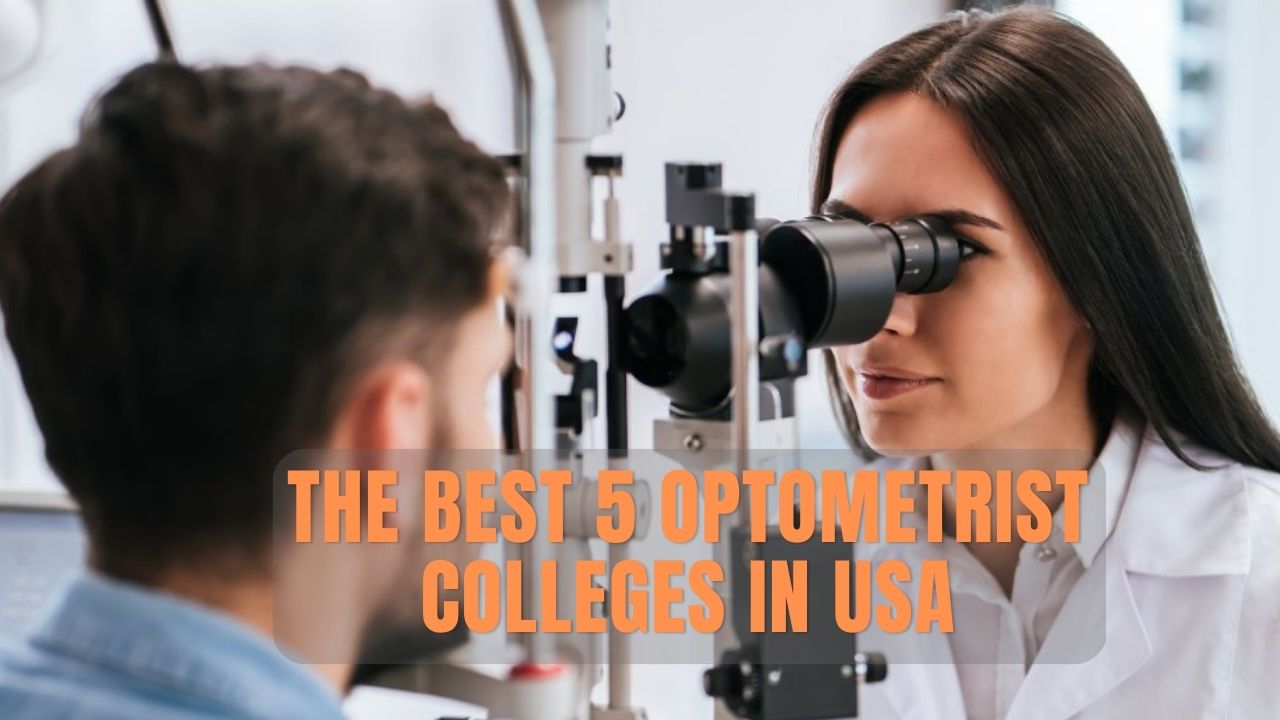
Do you want to study optometry in the United States? Are you attempting to recover costs associated with taking this highly regarded course? Do you balance your benefits and drawbacks?
So, if this describes you, you’ve come to the right place because this article is for you.
First off, there aren’t many universities in the USA that offer courses that are directly or indirectly related to optometry. In actuality, there are only two accredited optometry schools in the United States: University of Waterloo and Université de Montreal. However, some other institutions provide pre-graduate courses in visual science. Regardless of the entry requirements for optometry programs, we will provide you with some information on these schools in this article. We’ll also discuss the courses that are offered at these institutions as well as some other details about the program that you may not be aware of. As people frequently confuse the terms optometrist, ophthalmologist, and optician, let’s start with their differences.
Ophthalmologist, optometrist, and optician distinctions
An optometrist is a non-surgeon who is qualified to examine the entire system of the visual organs, including the eyes. Additionally, he or she is allowed to recommend medical treatments for any problem that affects the eyes. They could suggest glasses or contact lenses. An ophthalmologist, on the other hand, is a doctor who is qualified to operate on patients and treat eye conditions. In order to diagnose, they also check the eyes.
Why Study Optometry?
The field of optometry is constantly changing. You can be sure that studying optometry will lead to a fulfilling career. It is a challenging and engaging course to take. Most often, optometrists work in private practices like eye clinics, vision centers, and offices. You can also instruct college students.
When someone comes to your optometry practice, you have the power to improve their quality of life. You can evaluate their vision, provide contacts and eyeglass prescriptions, identify and treat eye injuries, and even identify and stop disease.
Over the next ten years, the field of optometry is expected to experience job growth of over 4%, with average net income of about $140,000 annually. There is a greater need than ever for optometrists as the nation’s population ages.
You have a lot of professional freedom in this field. All 50 states have a high demand for optometrists, both in urban and rural areas. You can also work with patients in clinical settings, teach others in educational settings or conduct research on your own.
How to become an ophthalmologist
The study of optometry can be somewhat difficult. You can study other subjects that are related to optometry, such as vision science, or you can enroll in an optometry school if you want to become an optometrist. You then continue with an optometry postgraduate course. It takes at least 7 years to become licensed in this field, including 3 years in college and 4 years in an optometry school. After completing a bachelor’s degree program, some students sign up for the programs.
academic prerequisites
- A secondary school diploma (SSGD)
- A diploma of college studies (DEC)
- A three-year BSc program with at least a 75% average grade point average.
To become a doctor of optometry, one must enroll in a doctor of optometry program and complete 7-8 years of post-secondary education (OD). You must register with the appropriate body in order to practice in the USA. People who practice optometry in Ontario, for instance, must register with the college.
Financial Dimension
Comparing the cost of studying optometry in the US to other countries, the US is less expensive. Studying can cost between $60,000 and $75,000 per year. The United States government funds this by making student loans available. You can also look for other private loans or try to get a scholarship at any of the universities that offer courses related to optometry.
The annual base pay for an optometrist is $139,934. Optometrists start out making $27 per hour, but as they advance in their careers, their pay increases. A salary of between $96,070 and $178,659 is possible. You can now see that it is a fulfilling profession.
The top 5 optometry schools in the USA
1. Southern College of Optometry
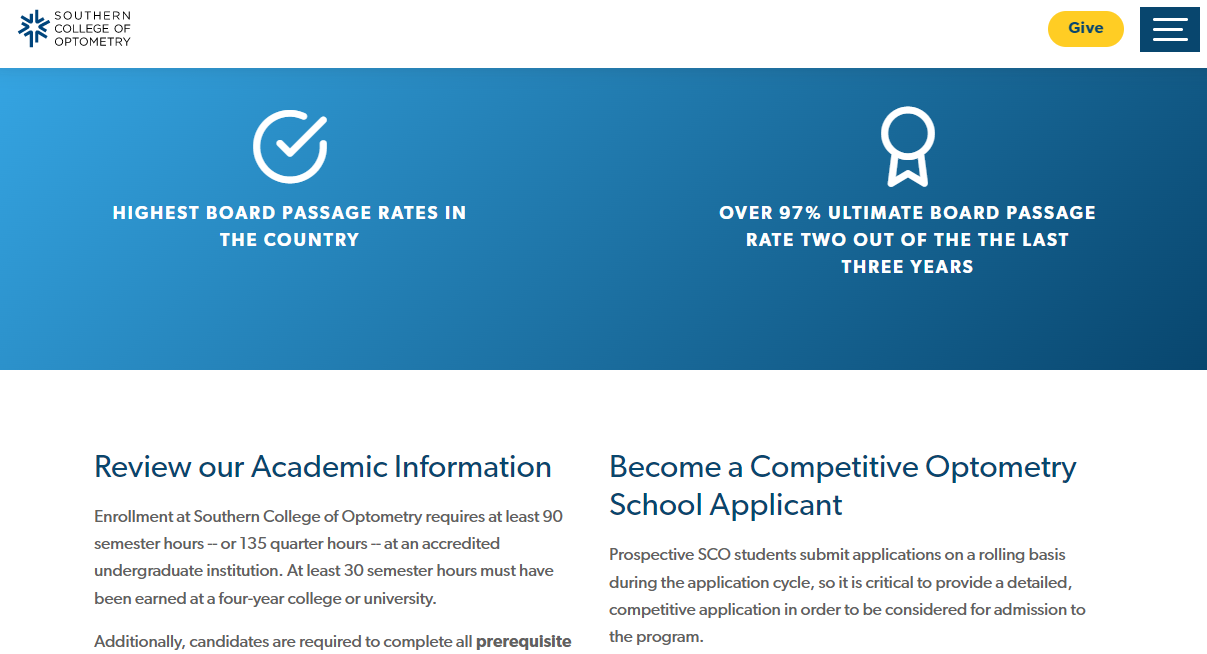
Even though it was established in 1932, the Southern College of Optometry is never content to do nothing. The institution underwent a $9.4 million expansion as recently as 2013, which provided its facilities with cutting-edge technology. The school also has The Eye Center, a teaching facility where students can gain practical clinical experience while caring for the 60,000 patients who come to the facility each year.
Unsurprisingly, nearly all of the 136 applicants who are accepted each year complete the program, giving SCO an exceptional pass rate of 98.5%. Furthermore, it should come as no surprise that leaders in the field of optometry, including fourteen presidents of the American Optometric Association, graduate from SCO. It is understandable why SCO students choose to remain enrolled at the institution given the 9:1 student-to-faculty ratio and the more than 60 endowed scholarships given out annually. They receive the help and consideration they require to develop into the best optometrists in the country.
2. New England College of Optometry
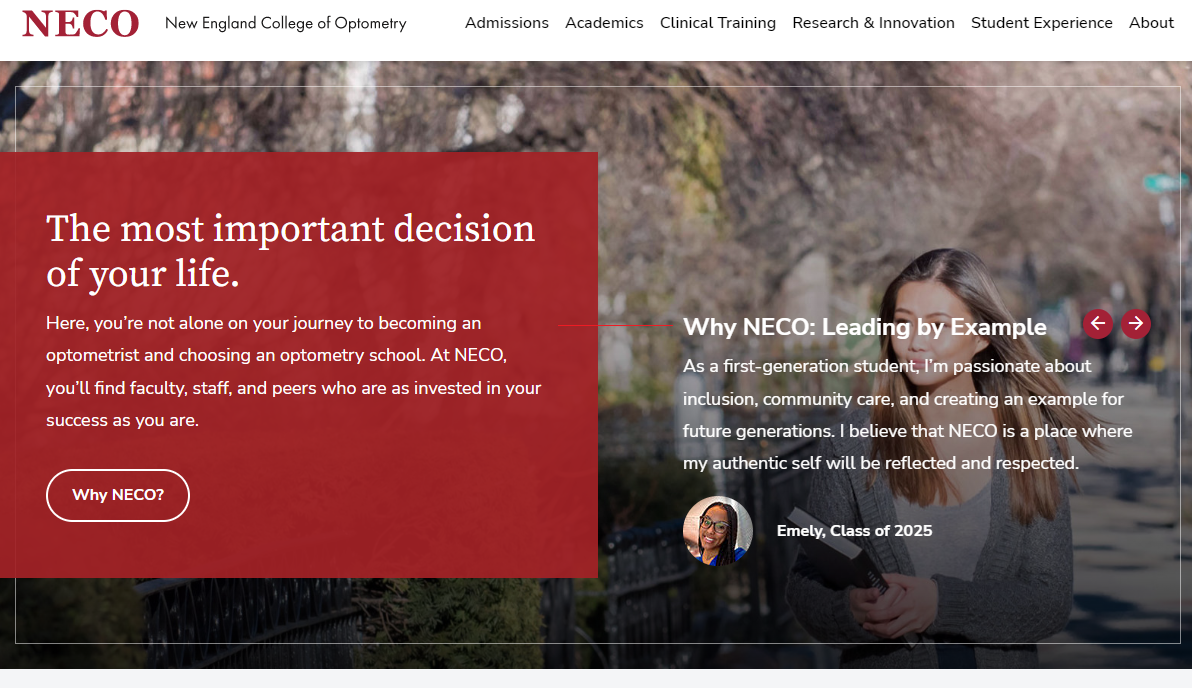
NECO, the nation’s oldest continuously operating optometry program, offers three specialization tracks (low-vision rehabilitation, pediatric optometry, and cornea and contact lenses). The school has a distinctive strategy for clinical training. It matches students with primary care physicians, ophthalmologists, and pediatricians in addition to optometrists.
NECO offers residency options in five different specialties: primary care optometry, pediatric optometry, ocular disease, cornea and contact lenses, and pediatric optometry. Every year, about 90% of NECO students achieve success on the NBEOs.
NECO intends to soon introduce the first hybrid OD program in the country. Students will be able to complete their coursework online and clinical rotations at a nearby facility starting in the fall of 2023. The institution hopes to draw students from all over the nation who might not reside close to an accredited program.
3. Ferris State College
If a student graduates before the program starts and they have not yet earned their bachelor’s degree, Ferris State University will accept them. Additionally, it offers a 3+4 program that is accelerated, allowing students to complete their doctorate and bachelor’s degrees in just seven years. Graduates from 2021 had a 97.22 percent NBEO pass rate.
This institution offers a wide range of residencies, such as those in pediatric and binocular vision, primary care, community health, cornea and contact lenses, and ocular disease.
4. University of Missouri – St. Louis (UMSL)
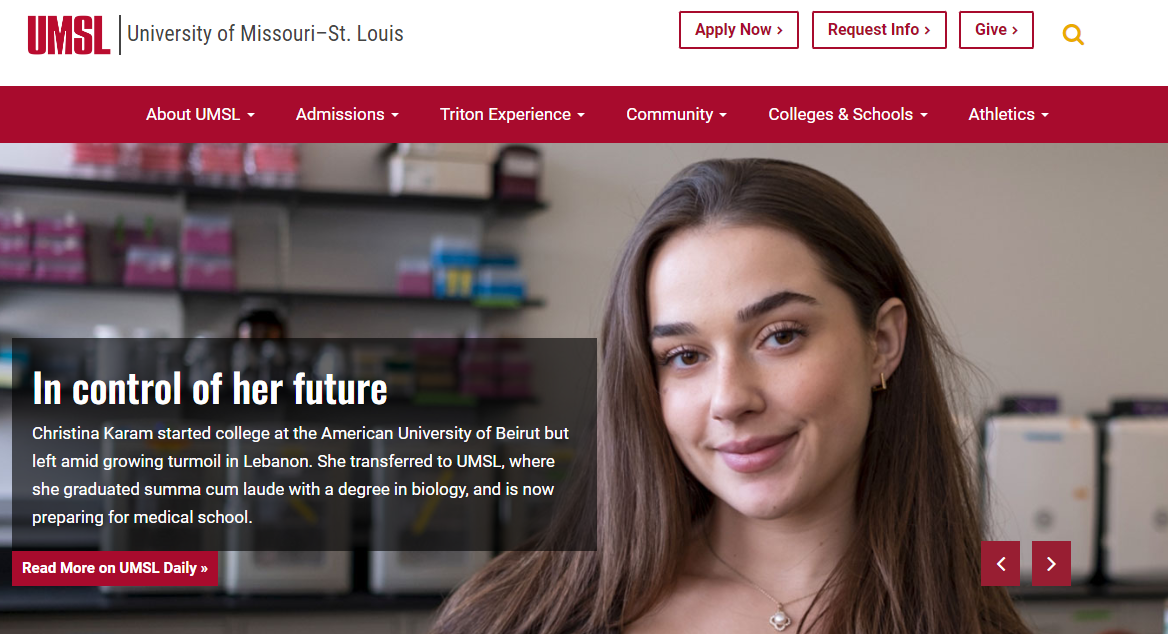
Graduates of UMSL can enroll in one of two residencies offered by the institution, including pediatric optometry/vision therapy or rehabilitation and cornea and contact lenses. At affiliated facilities, there are more choices, such as ocular disease, primary care (with a focus on ocular disease), and primary care (with a focus on refractive and ocular surgery). In 2021, graduates had a 94 percent NBEO pass rate.
Residents receive a sizable tuition discount at UMSL since it is a state institution. In-state students paid $13,380 for the fall and spring semesters and $6,240 for the summer for the 2020–2021 academic year. Students from out of state paid $10,336.80 for the fall and spring semesters and $21,573.60.
5. SUNY Optometry College
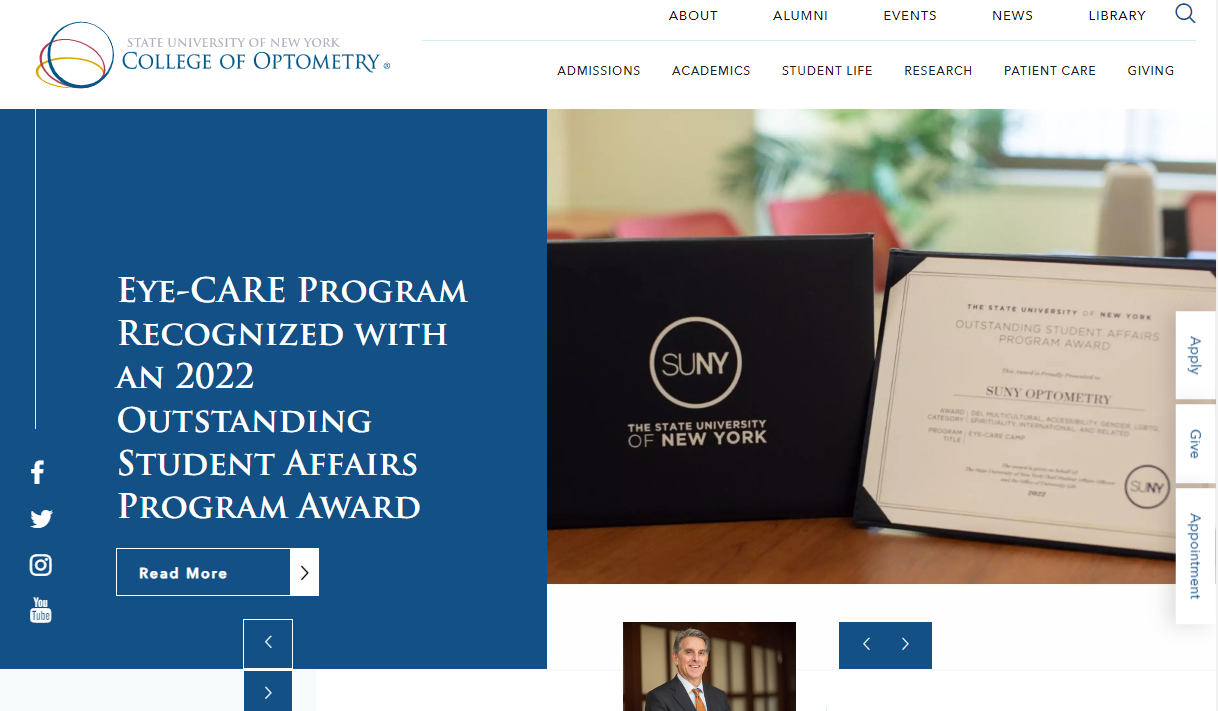
One of the most exclusive schools on this list is the College of Optometry at SUNY, which only accepts 23% of applicants. The school has high standards for its incoming class, expecting a GPA of 3.5 on average and an OAT score of 345 on average. However, almost everyone who is accepted into the program completes it, giving the school a pass rate of 96.84%. The program’s $4 million in annual funding for research programs supports its students.
The SUNY College of Optometry has produced some outstanding doctors over the course of its 50-year existence, but two of its most recent graduates are the 2019 American Optometric Association (AOA) Optometrist of the Year and the 2019 Johnson & Johnson Vision Award of Excellence in Contact Lens Patient Care winner.
Conclusion
Which five American optometry schools are the best? Knowing which specific optometry schools are at the top of the rankings can help you decide which are the very best colleges to apply to if you’re considering a career in this area of medicine.
There are ways to enhance your background to increase your chances of qualification and admission to one of these esteemed institutions even though not all optometry schools have the same acceptance rates.